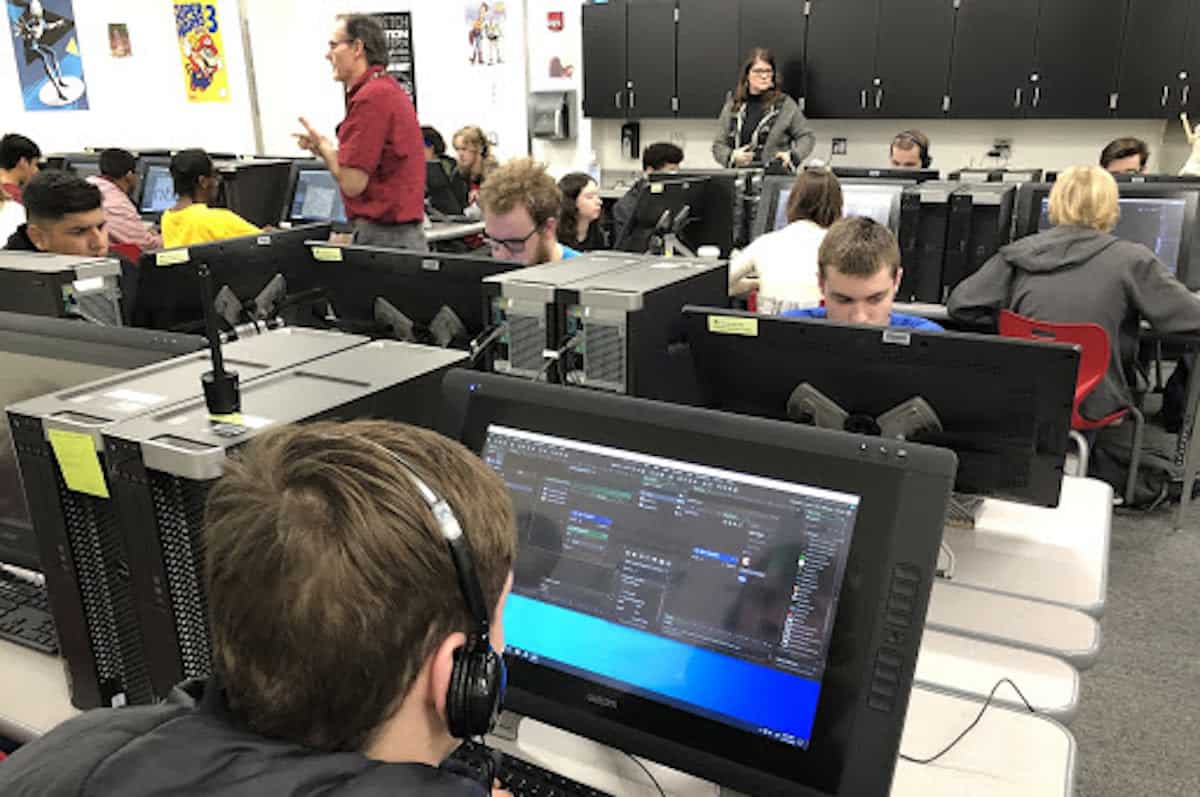Design Thinking: A Student’s Perspective

By Isis Toldson, 12th Grade Student at Village Tech Schools
Design Thinking (DT) is currently gaining traction in the workplace. Armed with post-it notes and sharpies, companies are reimagining how they do what they do. Businesses like Airbnb have used design thinking’s human-centered design mindsets to better connect with customers and boost sales. Others, like IBM, were inspired by Stanford’s School of Design, and have dedicated over 30 “studio spaces” and an entire team of people to teaching and implementing the creative methodology.
But what about schools? What about students? Universities aside, there are only a handful of schools in America that focus on Design Thinking. I’m lucky enough to attend one such school–Village Tech Schools in Cedar Hill, Texas. Not only does Village Tech use design thinking, but the school itself was built around its principles with design integrated into every class.
One of the places that design thinking is most obvious at Village Tech is in the Forge, the space where students go to make our wild ideas reality. Housing an art lab, workshop, computer lab, design studio, and makerspace, the Forge is never missing the smell of sawdust or the frustrated groans of a student struggling against a new challenge. It is in this space that the doctrine of “fail fast, fail often” is clearly seen. It’s where we learn that our own learning does not happen apart from failure, because learning is a product of failure. In the words of our Superintendent, David Williams, Village Tech is based on a failosophy, because “failing is just the first attempt in learning.”
As a student at Village Tech Schools and as an individual, I have seen the way that my failure has led to learning, and learning to success; eventually, our most frustrated groans become triumphant grins. From first grade students learning and illustrating the steps it takes a caterpillar to become a butterfly to tenth graders learning how to design and code an arcade game, Design Thinking makes just about anything possible. In my first year at Village Tech, I was the team lead of a group of four other eighth grade students. We were tasked with creating an input-output function box for the second-grade students to demonstrate what we were learning in Algebra class, and my group decided to create a “Minecraft Tree.” This was our first major design challenge, and we failed at first… a lot. From using the wrong paint colors to cutting boards incorrectly, we spent a lot of time building the actual product, but as we began to implement feedback we received, our tree went from a disaster to one of the best projects on exhibit that year.
Alejandra Balbuena, one of my fellow seniors at Village Tech, describes it like this: “Design thinking isn’t just a process. It’s a set of mindsets that are designed to help you work through any situation in life. The best part is how customizable it is for each person or group.” This also holds true in the variety and complexity of some of the design challenges and projects put on exhibit at Forge On, our end of the year student exhibition of learning. In past Forge On events, tenth-grade students presented a promotional video they filmed and produced for a local design studio called Bottle Rocket Studios. A few rooms away, fourth-grade students presented a community inspired project encouraging upcycling of unwanted objects that would likely end up in a landfill. Both of these projects were framed around design thinking and adapted to meet each grade levels capabilities.
In four short months, I will be graduating high school and heading off into the future. For now, I plan on going to undergraduate school for a degree in Business, with the goal of pursuing corporate law. With this degree, I will help small startup businesses maneuver the rapidly changing world of business and help them bring their big ideas to life without the fear of being silenced by much bigger and older companies. Even though that is my goal right now, I know that my plans may change, and whether I pursue law or not I know that what I’ve learned about Design Thinking will always be apart of my life. Even now, I use DT’s principles to make decisions in day to day life. Because of DT, I approach difficult things in life as challenges, not problems–even homework. As I grow and change, I don’t think I will outgrow these valuable lessons, instead I believe Design Thinking will grow and change with me.
For more, see:
- Real-Life Examples of Design Thinking in the Classroom
- Design Thinking and Other Learning Priorities to Educate Today’s Students for the Coming Automation Economy
- Design Thinking and Its Impact on Education Innovation
Isis Toldson is a 12th Grade Student at Village Tech Schools.
Stay in-the-know with all things EdTech and innovations in learning by signing up to receive our weekly newsletter, Smart Update.








0 Comments
Leave a Comment
Your email address will not be published. All fields are required.